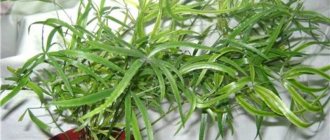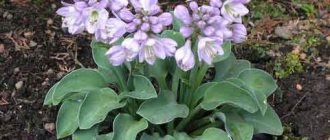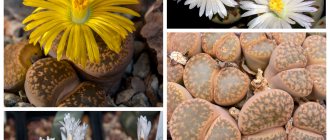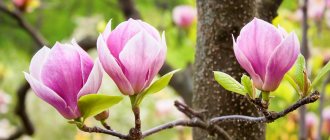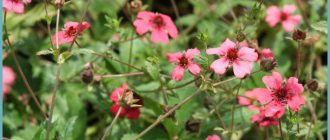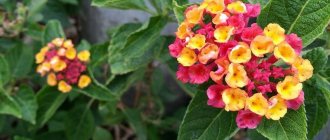Linden seeds: preparation, planting and care
- View the full image
Growing linden seeds
Propagation of linden using seeds
Seed preparation and planting
Seedling care
Since ancient times, the linden tree has been considered a tree that was valued and revered by humans.
It is mentioned in tales, legends, stories and fairy tales. It was valued not only as a decorative, but also as a medicinal tree. Its leaves and flowers are excellent medicines that help in the treatment of many diseases. In cosmetology, linden is also actively used for the preparation of creams, masks and other things. A huge number of poems and songs are dedicated to Lipa. Thanks to the rather dense crown with leaves, it creates excellent shelter from the scorching sun, which is so necessary on a hot day. Blooming linden trees emit a wonderful aroma, creating an atmosphere of harmony and tranquility all around. Linden wood is widely used in furniture production, which is also used to make various toys and objects. And what light steam reigns in the linden bathhouse! Thanks to all these advantages, linden is grown not only to create alleles, but also to decorate houses and gardens.
Propagation of linden using seeds
Many people probably know that the main method of reproduction of this amazing centenarian is seed. It is from the seeds formed in place of linden flowers that beautiful and slender trees are obtained.
Under natural conditions, linden seeds that have fallen in the autumn fall on the ground, where they lie for quite a long time. With the onset of winter, seeds are exposed to cold conditions that favor dormancy. It is important that the seeds remain in the cold for some time, since they need to gain strength before germination.
As soon as the first spring rays warm the soil to a sufficient depth, the seeds will begin to germinate.
Seed germination is quite active, especially if optimal conditions are created around. This is what happens in nature. It is possible to grow linden from seeds in artificial conditions, thanks to human labor. Linden seeds prepared in advance must be placed in fairly cold conditions to create conditions for real dormancy. The cold will not allow the seeds to germinate ahead of time. The effect of low temperatures on seeds is referred to in horticulture as stratification. It is with the help of stratification that fairly strong linden seedlings are obtained.
Seed preparation and planting
In order for linden seeds to germinate quickly, they must be kept in cold conditions for three months, preferably slightly damp. For this purpose, the collected linden seeds are placed in a container containing a certain amount of sawdust or moistened river sand. To ensure free access of air to the linden seeds, add a little peat to the container. A closed container with seeds is placed in a cold place.
As soon as spring comes into its own and the soil warms up a little, gardeners plant seeds to obtain seedlings:
- The most optimal conditions for growing it are at home, since it is still quite cool outside at this time.
- The seedlings will turn out to be friendly and strong if loose, heterogeneous in structure and sufficiently fertile soil is used. Such soil can always be found in the garden under fruit trees and shrubs.
- Before planting, such soil is additionally enriched with humus, sometimes adding sand.
- Before planting, the soil must be well moistened.
- It is not recommended to dry seeds before planting. In this case, their germination capacity is significantly lost.
- Seeds are planted in small rows, maintaining a distance of 15 to 20 centimeters.
- The seed planting depth is about one centimeter.
- Having buried the required amount of seeds, cover them with a small layer of soil and compact them a little.
- To speed up the emergence of seedlings, the seeds should be covered with film or other covering material.
- In about two weeks the first shoots will appear. Water as needed and monitor soil moisture.
The emergence of seedlings is not always uniform and uniform. As soon as you notice the appearance of condensed moisture under the covering material, it must be removed. This is done so that pathogenic microorganisms do not begin to multiply in the resulting warm and humid environment.
As soon as the sprouts become sufficiently strong and gain strength, they should no longer be covered.
During the germination of linden seeds, the ambient air temperature should not be lower than twenty degrees. The seedlings must receive enough sunlight to speed up the process of photosynthesis.
, you get beautiful and slender trees.
Under natural conditions, linden trees that have fallen in the autumn fall to the ground, where they lie for quite a long time. With the onset of winter, seeds are exposed to cold conditions that favor dormancy. It is important that the seeds remain in the cold for some time, since they need to gain strength before germination.
As soon as the first spring rays warm the soil to a sufficient depth, the seeds will begin to germinate.
Seed germination is quite active, especially if optimal conditions are created around. This is what happens in nature. It is possible to grow linden trees in artificial conditions, thanks to human labor. Linden seeds prepared in advance must be placed in fairly cold conditions to create conditions for real dormancy. The cold will not allow the seeds to germinate ahead of time. The effect of low temperatures on seeds is referred to in horticulture as stratification. It is with the help of stratification that fairly strong linden seedlings are obtained.
In order for linden seeds to germinate quickly, they must be kept in cold conditions for three months, preferably slightly damp. For this purpose, the collected linden seeds are placed in a container containing a certain amount or moistened river sand. To ensure free access of air to the linden seeds, add a little peat to the container. A closed container with seeds is placed in a cold place.
As soon as spring comes into its own and the soil warms up a little, gardeners plant seeds to obtain seedlings:
- The most optimal conditions for growing it are at home, since it is still quite cool outside at this time.
- turn out to be friendly and strong if loose, heterogeneous in structure and sufficiently fertile soil was used. Such soil can always be found in the garden under fruit trees and shrubs.
- Before planting, such soil is additionally enriched with humus, sometimes adding sand.
- Before planting, the soil must be well moistened.
- It is not recommended to dry seeds before planting. In this case, their germination capacity is significantly lost.
- Seeds are planted in small rows, maintaining a distance of 15 to 20 centimeters.
- The seed planting depth is about one centimeter.
- Having buried the required amount of seeds, cover them with a small layer of soil and compact them a little.
- To speed up the emergence of seedlings, the seeds should be covered with film or other covering material.
- In about two weeks the first shoots will appear. As necessary, produce and monitor soil moisture.
The emergence of seedlings is not always uniform and uniform. As soon as you notice the appearance of condensed moisture under the covering material, it must be removed. This is done so that pathogenic microorganisms do not begin to multiply in the resulting warm and humid environment.
As soon as the sprouts become sufficiently strong and gain strength, they should no longer be covered.
During the germination of linden seeds, the ambient air temperature should not be lower than twenty degrees. The seedlings must receive enough sunlight to speed up the process of photosynthesis.
Measures for caring for linden seedlings include mandatory loosening of the soil layer and timely watering. After three weeks from the emergence of seedlings, they must be thinned in order to get rid of weak sprouts. Then all the resulting plants are planted in separate pots. This contributes to their further strengthening and growth. For this event, you need soil similar in composition to the one in which the seeds sprouted.
When transplanting seedlings, you need to carefully handle the root system, as it is still quite weak and can be damaged.
With the onset of real warmth, which occurs in May, the previously obtained seedlings are planted in an open area. Usually it is a garden. Linden trees also grow on infertile soils, so they can be planted almost anywhere. It is advisable for seedlings to choose areas for planting with a good fertile layer and lighting. It is worth excluding direct rays of the midday sun from hitting linden leaves, as burn marks may appear on them.
The moisture-loving linden is demanding when it comes to watering, especially at the seedling stage. Therefore, it should be periodically loosened and the soil should be loosened to allow oxygen to reach the root system. There should be no weeds around the linden tree, as they will inhibit its growth.
As soon as two years have passed since the linden seedlings were planted in the garden, they can be placed in a previously prepared place for permanent growth.
You can plant linden in the garden, near the house, on the alley and in many other places. Its crown will easily fit into any landscape and become its decoration. And if necessary, this very linden tree will be an excellent medicine in the treatment of many diseases.
More information can be found in the video.
Linden is a beautiful tree, people’s love for which lasts for centuries. Its dense foliage provides excellent shade on hot days, and the aroma emitted during flowering fills the air with harmony and tranquility. In addition, linden flowers and leaves are successfully used in folk medicine and cosmetology, and its wood is an excellent raw material for the production of furniture and folk art. Linden is a long-lived tree. Today, there are a number of specimens that are more than five hundred years old.
One way to get this wonderful tree is to grow it from seeds. In nature, linden seeds that fall in autumn are exposed to prolonged exposure to cold, and with the arrival of spring they begin to germinate. The same should be done with seeds to be planted in the ground. The process of prolonged exposure to cold, called stratification in horticulture, is a necessary condition for obtaining linden seedlings.
The seeds of this plant must be kept in moisture and cold for three months - only then can they be expected to germinate successfully. The seed is placed in a container filled with sawdust or wet sand, to which peat can be added to improve air circulation. Then the container is placed in the refrigerator or in a cold room, where the temperature remains between 0 – 3 °C all winter.
With the onset of spring, the time comes to plant seeds for seedlings. It is recommended to grow it indoors - with the slightest frost, potential seedlings will certainly die. The soil for germination must be fertile and loose. It is advisable to take a base of high-quality garden soil, add humus, turf and leaf soil to it. Mix the finished substrate well and add a little sand. Before planting, the soil must be watered.
Seeds should never be dried before planting - then they most likely will not sprout. It is advisable to move them into the ground without much cleaning of the substrate in which they were located, so as not to damage them and preserve the formed microflora. The seeds are planted in rows, the distance between which should be about 15 - 20 cm. They are buried in the soil by approximately 1 cm and covered with a layer of earth, lightly compacting it. Then the containers are placed under cover for the germination period. With diffused light and an air temperature of 18 – 22 °C, seedlings should appear no earlier than two weeks later. Plantings are watered regularly, trying to keep the soil slightly moist.
The germination rate of linden seeds, unfortunately, cannot be called high. Shoots appear slowly and not simultaneously. The film or glass cover is periodically removed during seed germination to remove condensation formed on it. When most of the sprouts appear, the cover begins to be removed for a couple of hours a day, gradually increasing the time interval. Throughout the germination period, it is important to maintain an air temperature of approximately 20 – 23 °C and a sufficient amount of sunlight. Caring for seedlings involves timely watering and careful loosening of the soil. At first, it is necessary to prevent direct sunlight from hitting the seedlings - increased air temperature and rapid evaporation of moisture will inevitably lead to the death of the seedlings.
2 - 3 weeks after the emergence of seedlings, they need to be thinned out, removing weak specimens. To prevent plants from interfering with each other’s further growth, they are planted in separate containers, that is, they are planted. Linden seedlings do not tolerate transplantation well, so this procedure must be carried out in compliance with a number of conditions. Transplantation is carried out in soil of a similar composition and together with a lump of moist soil in order to minimize the possibility of damage to the roots. It is best to use peat pots, in which you can later plant seedlings in open ground.
In May or early June, when warm weather finally sets in, you can begin planting seedlings in the garden. Linden is a fairly unpretentious tree and can grow in almost any soil, but for young seedlings it is recommended to choose a more fertile plot of land. The lighting on it should be bright enough, but without direct sunlight during the midday hours, which is especially important for the southern regions.
When growing seedlings, it is necessary to remember that linden is moisture-loving, and it is advisable to prevent the soil from drying out for a long time. It is also necessary to regularly loosen the soil and remove weeds. Seedlings 1–2 years old are transplanted to a permanent place, preferably in the autumn.
Linden is very decorative and easy to care for; it has long been adorning parks and city streets. In addition, it has enviable resistance to frost and temporary droughts. Such a tree will undoubtedly decorate the garden plot and will be a wonderful gift for posterity.
Linden from seeds. How to grow linden from seeds?
Linden seeds must be stratified before sowing and this is done for 3-4 months in damp sand, wrapped in gauze and placed in the refrigerator. It can be planted in the spring either directly into the ground (early May) or at home in boxes - at any time, starting in February. The method of sowing at home is even preferable - the seedlings turn out better, and as soon as the seedlings reach 10-15 cm, they can be transplanted into the ground - either into a garden bed for further growing within 1-2 years, or to a permanent place. The soil for sowing linden should be loose and ventilated; for this you can add a little peat or rotted sawdust. Gardeners also often add sand to the soil to loosen it. The seeding depth is 1-1.5 cm. At home, you can safely sow up to 100 seeds in a box, the average germination rate is 50-60%. After sowing, the box is covered with film and placed in a warm place. The seeds germinate in 2-3 weeks; then the film is removed and the box is placed in a lighted place, usually on a windowsill on the sunny side. As soon as the sprouts become sufficiently strong and gain strength, they should no longer be covered. During the germination of linden seeds, the ambient air temperature should not be lower than twenty degrees. The seedlings must receive enough sunlight to speed up the process of photosynthesis. Measures for caring for linden seedlings include mandatory loosening of the soil layer and timely watering. After three weeks from the emergence of seedlings, they must be thinned in order to get rid of weak sprouts. Then all the resulting plants are planted in separate pots. This contributes to their further strengthening and growth. For this event, you need soil similar in composition to the one in which the seeds sprouted. When transplanting seedlings, you need to carefully handle the root system, as it is still quite weak and can be damaged. With the onset of real warmth, which occurs in May, the previously obtained seedlings are planted in an open area. Usually it is a garden. Linden trees also grow on infertile soils, so they can be planted almost anywhere. It is advisable for seedlings to choose areas for planting with a good fertile layer and lighting. It is worth excluding direct rays of the midday sun from hitting linden leaves, as burn marks may appear on them. The moisture-loving linden requires watering, especially at the seedling stage. Therefore, it should be periodically watered and loosened the soil to allow oxygen to reach the root system. There should be no weeds around the linden tree, as they will inhibit its growth.
You can purchase four types of linden seeds in our online stores
It is the cutting method that most gardeners choose to propagate linden trees. The thing is that this plant takes root very easily and can grow in any type of soil. But, of course, for the splendor of the crown and abundance of flowering, the tree should be properly cared for.
In the forest, the plant does not have to choose, and it grows without requiring fertilizing or processing. However, in the garden, in order to maintain the decorative appearance of the linden tree, it is necessary to create comfortable conditions for it: promptly clear the tree trunk of weeds, water it and at least occasionally fertilize the soil.
Seedling care
Measures for caring for linden seedlings include mandatory loosening of the soil layer and timely watering. After three weeks from the emergence of seedlings, they must be thinned in order to get rid of weak sprouts. Then all the resulting plants are planted in separate pots. This contributes to their further strengthening and growth. For this event, you need soil similar in composition to the one in which the seeds sprouted.
When transplanting seedlings, you need to carefully handle the root system, as it is still quite weak and can be damaged.
With the onset of real warmth, which occurs in May, the previously obtained seedlings are planted in an open area. Usually it is a garden. Linden trees also grow on infertile soils, so they can be planted almost anywhere. It is advisable for seedlings to choose areas for planting with a good fertile layer and lighting. It is worth excluding direct rays of the midday sun from hitting linden leaves, as burn marks may appear on them.
The moisture-loving linden requires watering, especially at the seedling stage. Therefore, it should be periodically watered and loosened the soil to allow oxygen to reach the root system. There should be no weeds around the linden tree, as they will inhibit its growth.
As soon as two years have passed since the linden seedlings were planted in the garden, they can be transplanted to a previously prepared place of permanent growth.
You can plant linden in the garden, near the house, on the alley and in many other places. Its crown will easily fit into any landscape and become its decoration. And if necessary, this very linden tree will be an excellent medicine in the treatment of many diseases.
More information can be found in the video.
How to grow linden from seeds?
I have already tried several times to grow linden trees from seeds, but for some reason it doesn’t work. Could you tell us about the possible nuances of this case? It is best to start collecting linden seeds from trees after leaf fall. A small amount of them can also be collected from the ground. Pre-sowing preparation is absolutely necessary, because without it there will simply be no seedlings. The seeds are kept moist at a temperature of about zero degrees for three to four months. To do this, you can spread them in a thin layer on the surface of the soil before the start of snowfalls or bury them in the snow at the beginning of winter and then sow them, without drying them out (otherwise they will die!), into moist soil as soon as the snow melts. A cold basement is also suitable for stratification. In a pinch, a refrigerator will do, but then you need to carefully ensure that the seeds do not dry out or become moldy. You can also sow seeds in the fall, but this does not always ensure good germination, and most seeds can germinate only in the second year.
In general, linden cannot be called the easiest tree to grow in an amateur nursery. In addition to the need for pre-sowing preparation, linden is sensitive to late spring frosts. Shoots that appear before such frosts can easily die. Small: small linden seedlings are difficult to transplant. Annual seedlings can only be replanted in the spring, because autumn replanting is even worse tolerated.
Seeds are sown in rows with a row spacing of 15-20 cm. The furrows with crops are covered with a layer of soil 5-7 mm thick.
The soil should be moist already when sowing; if it seems a bit dry, then it is advisable to water it first. In case of frost, it is a good idea to cover the crops with a temporary greenhouse made of film or non-woven covering material, but in such a way as to leave access to air. After the threat of frost has disappeared, it is better to remove the greenhouse immediately. Linden, like elm, is very demanding on soil moisture. In dry weather, crops must be watered. In good conditions, the height of the seedlings by autumn can reach from 15 to 50 cm. In the spring of the next year, the linden trees need to be transplanted into a school, and the largest ones can already be placed in a permanent place. In a shkolka, seedlings are planted at a distance of 5-10 cm from each other in a row and with a row spacing of 25-30 cm. By the autumn of the second year, all seedlings can be transplanted to permanent places. Only in a particularly cold and unfavorable year may they turn out to be too small. In this case, it is advisable to leave the linden trees in the school for another year.
Manchurian linden
Tilia mandshurica Rupr.
Z.I. Luchnik writes that the Manchurian linden wintered satisfactorily. Sometimes her annual shoots froze, and she also had sunburn, like other types of linden trees. T.N. Vstovskaya notes the lower winter hardiness of the Manchurian linden than the Amur linden, especially at a young age.
Photo of Manchurian linden seeds:
PK645 Manchurian linden seeds
My winter sowing of Manchurian linden sprouted in the second year, germination is quite satisfactory, it is possible that seedlings will appear in the third year:
PK40 Manchurian linden Tilia mandshurica Rupr.
In the first year, the Manchurian linden was picked into separate glasses and by August it managed to prepare for winter in time. It shed its leaves later than the Amur linden, but earlier than the American linden.
PK344 Manchurian linden shoots from seeds
The seedlings more or less survived the first winter. The growth in the second year was insignificant, like that of other linden trees:
PK40 Manchurian linden in the second year after sowing
Grow linden from seeds at home
Linden is a picky tree that can grow on any soil. It can also be in the form of a tall tree or dense bush. Linden leaves and flowers have long been known for their beneficial properties. Valuable wood is used in furniture production and basket weaving.
You can grow linden using seeds, which must undergo special preparation. Seeds are usually exposed to cold when they overwinter on the ground. When the first sunlight and warmth appear, they begin to germinate, but very few grow into a strong tree.
Preparing linden seeds
When planting seeds yourself, a cooling process called stratification is also used. To do this, they are moistened and placed in the cold for 3 months. Often sawdust, sand and a little peat are used for this. This whole mixture is moistened and linden seeds are poured into it. The prepared soil is placed in a container and sent into the cold, where the temperature is maintained from 0 to +3 degrees. In such conditions, the seeds remain almost all winter. During this time, the hardened shell is slightly destroyed, which makes it possible for the sprouts to hatch easily.
Preparing the soil and planting seeds
Although linden can grow in infertile soil, it is necessary to select high-quality soil for germinating seeds. The following components are suitable for this:
- deciduous soil;
- turf;
- humus;
- fertile black soil;
- sand.
It is necessary to plant the seeds in the prepared soil immediately from the substrate in which they have been located all winter. The seeds should not be allowed to dry out, otherwise they will not germinate. In order not to damage the swollen planting material, you need to transfer it without cleaning the previous prepared soil.
The seeds are planted in rows, between which there should be a distance of 15-20 cm. Then they are sprinkled with 1 cm of soil. You can also compact the soil a little so that it fits well to each seed and the sprouts quickly hatch. To maintain the required humidity and temperature, it is better to cover the box with seeds with transparent polyethylene.
If the temperature is above 20 degrees and proper soil moisture is maintained, the first shoots will appear in about two weeks. Despite the correct preparation of the seeds, they still germinate unevenly and weakly. When shoots appear, the cover must be removed so that the linden shoots can see the light and can breathe freely.
Caring for linden seedlings
To avoid burning the tender seedlings, it is important to avoid direct sunlight. Regular watering will help the seedlings develop quickly. To strengthen the root system, it is necessary to carefully loosen the soil.
When the seedlings have reached three weeks of age, they need to be thinned out. To do this, weak seedlings with thin stems and weak coloring are removed. After this, it is necessary to dive. It is worth digging up seedlings that are disturbing others and transplanting them into another container. In order not to damage the root, you need to dig it up along with a lump of earth. It is also necessary to transplant the seedling into similar soil for further decent growth. To spend less time replanting small bushes, you can plant them in peat pots. When planting a tree in open ground, pots are planted in the same way, which protects the root from damage and saves time.
Planting linden in open ground
The end of May and beginning of June is suitable for this. At this time, the weather is normalizing and severe frosts are not expected. It is necessary to plant small linden trees in an area where there is enough light. However, you should not choose completely open areas where trees can die from the scorching sun. In order for the linden tree to develop adequately, it must be regularly watered and loosened the soil.
Open ground carries a certain danger, since the tree is not protected from pests and diseases. Dangerous pests include lacewing and leaf roller. To kill them, it is necessary to spray them with a special preparation when these “guests” appear. For greater effect, it is necessary to carry out three treatments of the crown of young growth throughout the entire season.
Also, young trees can suffer and die from fungi and other diseases. These include thyrostromosis, marble rot and white spots on the leaves. To protect young animals from these fungi, you need to regularly inspect the seedlings and carry out preventive spraying with copper sulfate or other means.
If the leaves become stained, then they, as well as the branches, must be removed from the trees and burned to avoid the growth of the fungus. You also need to disinfect the soil using special preparations for this. In case of severe damage by disease or fungus, the seedling must be dug up and removed from healthy linden trees. It is best to burn a diseased tree away to destroy the fungus and prevent it from spreading to healthy trees.
After 1-2 years, a small linden tree can be transplanted to a permanent location. This one is best done in the fall to ensure there is enough moisture. A linden tree can decorate any plot of land. Some lindens live up to 1000 years and reach 40 meters in height. Therefore, they will be able to become an inheritance not only to grandchildren, but also to great-grandchildren.
Rules for planting linden seedlings
If you want to have a beautiful, healthy linden tree on your property, you can buy ready-made seedlings, preferably with a closed root system. The features of their planting are as follows:
- To plant a seedling 50-70 cm high, you need to prepare a hole for it with a depth and a diameter of about 0.5 m.
- The hole should be drained with crushed stone or crushed brick. The thickness of this layer is 15 cm.
- On top of the drainage you need to lay a 5-7 centimeter layer of humus mixed with superphosphate. Take 50 g of superphosphate per plant.
- A linden seedling is immersed in a prepared hole and sprinkled with an earthen substrate prepared from 1 part turf soil, 2 parts sand and 2 parts humus.
- The root collar of the tree should be placed at ground level, but it can also be deepened a few centimeters.
- Linden seedlings are well moistened and fertilized with nitrogen compounds three times a season for 2 years. Manure diluted in 10 liters of water is well suited for feeding.
Secrets of growing linden on the site and tree propagation
A very reliable shade tree even for difficult conditions. Tolerates a very wide range of soil conditions. Linden trees are a very flexible tree, making them an excellent choice for open, windy areas. The genus Linden consists of 30 species of deciduous trees that are found in eastern and central North America, Europe and much of temperate Asia. These are trees with a round or conical crown of foliage and smooth silvery bark, which becomes fissured over time. Linden trees are a popular choice for use in parkland and for avenue plantings where their elegant habit and fresh foliage can come into full bloom. Thin, inverted branches create a dense, uniform crown with a conical contour. Tiny, yellow, fragrant flowers appear in early summer, and small, heart-shaped, green leaves turn yellow in fall.
Linden trees are popular ornamental trees in Europe. Their flowering tops are collected in season and dried in the open air, then consumed as tea.
Landing location
Linden will grow best in deep, moist, fertile soil. However, it will tolerate much worse conditions, and will grow on rocky, poor, infertile soils, although a little more slowly.
Plant a solid stake at the bottom of the hole, along the edge, sloping toward the prevailing winds. Trim away the fine roots that look like hair to balance the volume of the roots and foliage.
Plant without burying the boundaries between the trunk and roots of the tree, placing the layers of soil in the same order in which you removed them. Kick the soil around the roots to avoid leaving an air pocket, and secure the stake to the trunk using a suitable tensile link.
Siberian linden
Tilia sibirica Bayer
A local wild-growing species, found in the Altai Mountains on mountain slopes on moist, slightly podzolic, heavy loamy and clayey soils, in dark coniferous taiga with ferns and tall grasses. Under natural conditions, trees reach 28 m in height and 90 cm in diameter. Forms pure stands or grows in a mixture with fir, cedar, birch, and aspen. In cultivation, it exhibits low drought resistance and therefore lags behind in growth compared to small-leaved linden of the same age, although it surpasses it in winter hardiness. /Z. I. Archer/
When sowing seeds in the beds in winter, they sprouted in the second spring.
PK145 Siberian linden shoots from seeds
More…
Planting linden
Once the hole is prepared and the root ball is ready, you can plant the tree.
Place the tree in the middle of the hole and begin filling in the original soil to stabilize the tree.
Mix in some organic compound to give the soil some rich nutrients.
Water the soil completely and finish filling the hole.
Linden tree care
- Mulch. After planting the linden tree, make sure that the soil is not compacted too tightly. Add a 6-8 cm layer of mulch around the base of the tree, but not close to the trunk. It is recommended to apply mulch in summer and winter. Once the ground thaws in the spring, you can lift the mulch. Organic material such as straw or chopped leaves work well as mulch. Mulches also increase the nutrient content of the soil once decomposition begins.
- Fertilizer. Linden does not need to be fertilized until the tree is less than 2 years old. It is best to use organic fertilizer. Add some to the soil when you plant the tree. This will help add nutrients to the soil as it decomposes. Organic manure also promotes healthy root development. Once the roots are well formed, you can give a slow-release granular fertilizer once a year. Autumn is the ideal time to fertilize. This will help prepare the tree for harsh winter weather.
- Trimming. Light pruning is necessary to maintain the shape of the linden tree, although formative pruning is only necessary when it is young. The main branches should be less than half the diameter of the trunk, and the shoots should be removed from the base of the trunk. Wait until winter until all the leaves have fallen. First cut the branch 20 cm above the fork: this will prevent healthy parts from breaking when falling. Then make a clean second cut to remove the remaining 20cm, cutting only 2-3cm above the fork.
- Watering. Water regularly and generously for several weeks after planting or sowing, especially if you did so late in the season. Maintain a regular watering schedule for the first 2 years. This will encourage the roots to become well established. Water the seedlings twice a week. Once the roots are established, you can water once a week. Be careful not to create soil conditions that are too wet, as this can cause root rot. Periods of drought or hot weather, such as in the summer, will require additional watering.
Young tree care
After the first year, you can already begin to form the crown. It is important not to cut them too much; 1/3 of a branch is enough. Cultivation can be carried out after the buds have broken and the temperature outside has equalized.
Feeding is carried out twice a season with a special mixture of cow manure (1 kg), 20 g of urea and 25 g of saltpeter. All this is diluted in one 10 liter bucket of water.
Only young trees that are still in the state of forming roots and trunk require fertilizing. Every gardener knows how to grow linden, since it is a plant that is so unpretentious that it can grow in any conditions.
How to grow a plum from a seed: tips and tricks on how to prepare the soil, prepare fertilizers and grow plums at home (155 photos + video)- Do-it-yourself columnar foundation for a gazebo: instructions, diagrams, calculations
How to choose the right fruit trees and shrubs for planting
How to grow linden from seeds
Before you begin this operation, you need to understand that not all seeds collected from a tree will be viable and able to germinate. Often linden seeds are sterile or infected with the seed weevil, which feeds on the endosperm of the seed. This larval feeding destroys the embryo. Pay close attention to the seed covering, a small hole in the seed covering is a good sign of weevil damage. An unfertilized seed will look the same as a fertilized one, but the pericarp will be hollow instead of containing an embryo. A float test in water can help separate the infertile seeds that float from the fertile seeds that should sink.
Linden seeds usually take two or more years to begin to germinate, and full germination will be spread over two to three and as many as 5 years. Linden seeds exhibit delayed germination due to several factors. The outer shell of the seed is impermeable to water, which is necessary for germination. The hard pericarp prevents the expansion of the embryo, and the embryo itself exhibits dormancy, which delays germination.
Collecting seeds early before they turn brown is the most reliable way to shorten the germination period. Collect seeds from the tree when its color begins to change from green to yellow, and immediately place in moist potting mix. Wait 2 or more years for germination. As insurance against poor germination or infertile seed, collect and sow excess seed.
Linden seedlings will grow in full sun to partial shade. The seedlings will require some shade in the early years of establishment, but will then tolerate full sun. Linden trees growing in open ground have powerful root shoots and often have many trunks. In full sun, linden develops a wide, rounded, open crown with heavy, low branching. When grown in a shady area, the linden will strive for sunlight and develop a tall, straight trunk without a rounded crown.
Where is the best place to plant
Linden will grow anywhere, be it sun or shade. However, you should give preference to a well-lit area. In this case, it will bloom more abundantly.
Regardless of the type, linden grows best on fertile soil. Clay soil and loams should be lightened and enriched. To do this, peat and sand are added to the site.
The linden itself has the ability to improve the soil. Fallen leaves, decomposing, enrich it with calcium, potassium, sulfur and nitrogen.
Linden grafting
An alternative to growing difficult seeds is to "graft" cuttings. Linden cuttings must be grafted onto a root to allow the cutting to develop its own roots. This practice is known as root grafting. The root is cut horizontally and the incision is made, about 10 cm deep. The two parts of the graft are tied together and the cut is covered with grafting wax so that the plant is actually attached to the root and can draw water from it. It is then planted in the soil until roots appear. At this point, the original root may be removed or left to die.
In addition to root grafting, there is also “bud grafting”. In this case, a small segment containing only a single bud is used. Having cut the bark on the grafted root, a cutting is inserted into this gap, and the whole thing is tightly tied together. The buds and cuttings must then grow and develop their own roots. When using this technique, care must be taken to ensure that neither the bud nor the cut is damaged during processing.
Propagation of linden seedlings
Linden is an unpretentious tree that can easily withstand light damage to its roots when planting seedlings. But it is important to understand that severe trauma to the root system can even kill the plant.
Therefore, gardeners often resort to planting seedlings with a closed root system (transplanting from a pot). This manipulation occurs completely unnoticed by the young tree and does not harm it in any way.
In this case, the hole should be made quite deep (up to 1 meter), small stones or even broken bricks should be placed at the bottom. Be sure to use phosphate fertilizers and a special mixture of soil, sand and humus.
Diseases and pests of linden
There are no serious insects or diseases affecting linden trees. Some fungi cause pinhead-sized, reddish-brown spots on the bark of linden branches and twigs. They break through the surface of the bark, providing access for other diseases and pests to enter the tree. Remove any twigs and branches collected in jars and pick up anything that has fallen to the ground. Destroy them. Powdery mildew, leaf spots and cankers may occur. Spider mites can cause significant damage, especially during hot and dry periods.
Linden trees can also suffer from environmental stressors, which can often manifest as disease symptoms. The most common environmental diseases are trace element chlorosis and winter damage due to frost or freezing. Consider all possible causes when examining the symptoms of linden disease before committing to a treatment plan.
How to plant a linden tree with seeds, layering and cuttings
Linden can be seen in almost every city of our vast country. It is used for landscaping parks, squares, alleys. They are valued for their ease of care, neat appearance, and fragrant aroma during flowering. The crown is easy to shape and retains its shape for a long time, which is appreciated by landscape designers and gardeners. You can also plant a linden tree in your garden. Linden is propagated by seeds, seedlings or layering. The main thing is to know how to properly replant a plant and care for it.
Features of linden
Linden grows quickly and can reach more than 40 meters in height. She is considered a long-liver. In favorable conditions and with good care, some varieties can live for about 1000 years. Linden is resistant to aggressive environmental factors such as dust, dirt, and gas contamination.
Linden trees, depending on the variety, can have different crown shapes: pyramidal, ovoid, spherical, etc. The trunk always grows in an upward direction. It happens that several trunks grow from the root at once. And if there is not enough light, then the linden tree can grow in the form of a bush.
Common types of linden
The linden plant genus has about 45 species. Here are the most popular ones:
- Linden cordate - grows in Western Siberia and the European part of Russia. The tree reaches a height of about 30 m and lives a long time, at least 120 years. Some specimens live up to 1000 years. The culture has smooth glossy foliage, dark green on the upper side and bluish on the lower side. The inflorescences contain from 5 to 11 buds, their growth is directed upward. In Siberia you can also find plant species such as Siberian linden and Nashchokin linden.
- Large-leaved linden, also known as flat-leaved or summer linden, is common in Europe. Unlike the heart-shaped Linden described above, the large-leaved Linden blooms earlier, and its spring sap flow begins at an earlier time. It has large foliage, slightly pubescent, without a bluish tint on the underside. The inflorescences are directed downwards, and the fruits are distinguished by a dense shell with 5 expressive ribs.
- Felt linden. Its habitat is the Caucasus and southwest Russia. In Europe, the culture can be found in the eastern part of the continent. The tree reaches a height of 25-30 m and has a spreading crown. Young foliage and shoots are covered with small fibers. Growing up, the upper part of the leaves becomes smooth, dark green, the lower part remains fleecy and has a silvery tint. This is a heat-loving, shade-tolerant and drought-resistant species.
- Manchurian linden - common in the Amur region and Primorye, as well as in Korea and China. It is slightly lower than the previously described species, its tree grows to a height of 15-20 m. It has drooping inflorescences of 5-12 flowers. It is considered a good honey plant. Blooms in July for about 3 weeks.
Basic methods of reproduction
Growing linden at home is not difficult. It grows well both in shaded areas and in illuminated areas. The main thing is to ensure that the soil is not too wet or, conversely, too dry. Sandy soil with humus is best suited for planting and propagation. Fallen leaves from a tree improve the properties of the soil around it.
When planting a seedling, it is important to take into account that the tree will grow large, so it should not shade other plants. And the linden tree itself needs space to develop. If you plant on the windy side of the site, it will not harm it. But in a few years it will be able to protect the area with the help of a thick, wide crown from strong winds.
Linden can be propagated by seed, cuttings or layering. In any case, it is necessary to prepare the soil in advance. To do this, it is recommended to mix one part turf soil, two parts humus and two parts sand. Let's take a closer look at each method of reproduction.
Seeds
It will take quite a long time to grow a linden tree from seeds. This is painstaking work that requires maximum attention and responsibility. To propagate linden by seeds, you need to keep them in well-moistened damp sand in the cold (not above zero degrees) for up to six months. This is called seed stratification. It is necessary to improve the seedlings of the plant during the propagation process.
In the spring, when the time for night frosts has passed and weather conditions have stabilized, they are transplanted to an open area, where the strongest of them sprout. For the first two to three years, it is recommended to water them, feed them with fertilizers, and cover them for the winter. Young seedlings can be transplanted to a permanent place when they become stronger and no longer require careful attention and care.
By layering
To propagate linden by stem layering, you need to dig shallow longitudinal depressions, bend the lower branches of the tree, and then bury them. Rooting occurs within 1-2 years. Then, the sprouted shoots can be separated and transplanted to a new location. It is important that the propagation process in this way occurs at the beginning of spring, when the leaves have not yet begun to bloom.
You can propagate by root layering. This method is considered one of the simplest and most popular. Young shoots grow near the trunk of an adult tree in spring. To transplant, they are carefully separated from the “mother” root and planted immediately in the chosen place. In this method of propagation, young seedlings can be transplanted from the forest belt to garden plots.
Cuttings
Propagation of linden by cuttings is one of the popular methods among gardeners. Linden cuttings are usually carried out in the fall. To do this, cut young branches from 10 to 15 cm long. The branch should be green with young foliage. All leaves are removed during preparation. The cuttings must have at least 3-4 internodes.
After the cutting is cut, it is placed in water. In order for the root system to develop more efficiently, it is recommended to dilute the water with Kornevin. It is important to maintain the temperature of the water. It should not fall below 25 degrees Celsius. After the roots form, the cuttings are transplanted into a container.
Cuttings that have taken root are placed in boxes with damp sand, buried no more than two centimeters. With the onset of a thaw, they are planted in an open place in the ground, ensuring timely watering and care.
Reproduction
Linden is propagated by growing seedlings from seeds, digging root cuttings, and cuttings created from low-lying branches. It may take 10 years before a young flowering tree is obtained.
- Stem layering
In early spring, a part of the lower branch is buried, securing it to the ground. The site is marked and watered, especially during summer dry periods. Rooting continues for more than one season. The seedling will be ready for planting in 2-3 years.
- Root layering
It is easier to propagate linden this way because it produces abundant root shoots. A seedling with a thick lobe is selected and moved to a new area.
- Seeds
Growing linden with seeds is a long and rather complicated process. But as a result, you can get more than a dozen seedlings. Under natural conditions, linden seeds do not germinate next spring, but a year later. Therefore, to germinate, they need to be stratified for a long time - up to six months. To do this, prepare a container with wet sawdust, sand or a sand-peat mixture (in a 1:1 ratio). The seeds are deepened by 2-3 cm, the container is placed in a cold and dark place, preferably with a temperature that remains at zero. The mixture is watered moderately all the time so that the seeds do not dry out.
In the spring, the seeds are taken out and sown in a plot in the garden. If there is a threat of return frosts, the seedlings must be covered, otherwise they may die. Young stickies are sensitive to moisture. They are watered regularly and the soil is kept free of weeds. In good conditions, by autumn the seedlings grow to 15-50 cm. A full-fledged seedling is obtained after 2 years. Different species have different growth vigor. Small seedlings are transplanted only in the spring; they do not tolerate autumn transplantation well.
If seedlings are grown in containers, the substrate is prepared from 1 part of turf or garden soil, and also 2 parts of humus and sand. Humus is sometimes replaced with compost.
Planting and care
Replanting a linden tree in open ground requires following certain rules:
- When choosing a seedling, you need to pay attention to its general condition. Only strong, healthy shoots are suitable for planting. They can be found in open, well-lit clearings.
- When digging up a seedling to transplant a linden tree to a new location, it is important not to damage the roots. If this happens, the damaged branches of the roots are carefully cut off.
- Trees with exposed root systems should not be left in the wind. It is better to dig them in before planting.
- It is necessary to prepare the landing hole in advance. It should be larger than an earthen clod with roots. When transplanting, the roots need to be straightened. This will require free space.
- After planting, it is better to tie the seedling to a support using stretchable material.
- The root collar should be slightly above ground level.
- The soil around the trunk must be compacted and watered abundantly.
- Linden trees should be planted in autumn or spring. Before or after the beginning of the growing season.
Care consists of timely watering and loosening the soil. The soil should not be allowed to be dense, excessively wet or very dry. The first years after planting, the linden tree needs to be fertilized. It is recommended to feed with mullein infusion in spring and summer. A one-year-old tree can already be shaped by trimming its crown. It's better to do this in the summer. In the fall, after the leaves fall, you need to carry out sanitary pruning and remove all diseased or damaged branches.
Planting a linden tree
Small-leaved linden (heart-shaped) can grow equally well in lighted areas and shady areas. Prefers leached, drained, moderately moist, structured soils. Own fallen leaves improve the properties of the soil.
Linden is grown from seeds. Under natural conditions, seeds falling into the soil are stored in it for about a year and germinate the following spring. For normal germination, linden seeds are stratified, cooled and soaked. To do this, they are placed in damp sand and stored there for up to 5 months at a temperature of 0°C. For high germination, all stratification conditions must be met. In spring, seeds are planted in moist soil and provided with abundant watering. Autumn planting of seeds does not require preliminary stratification, but germination in this case may be low.
Sowing seeds can be replaced by transplanting linden seedlings, which often begin to grow near old individuals. Seedlings are dug up in the forest or forest belt. They can be recognized by their cotyledons, which have a lobed shape. They can easily tolerate transplantation, especially if it is done in wet weather. The area for planting seedlings must be fertilized with humus. Planting holes must be at least 60 cm deep. Humus or compost is poured onto the bottom. The seedling placed in the hole is covered with earth and watered abundantly.
When planting in groups, you need to leave a distance of 3-4 m between plants. The root collar should be on its surface after the soil settles. Turf, sand and humus are used as soil mixture. A drainage layer of crushed stone, 20 cm high, is required. In early spring, additional fertilizing is done with mullein, urea and ammonium nitrate. The first week after planting, abundant watering is required. During the dry period, young seedlings need frequent and abundant watering. Adults do not need watering.
Linden seedlings can be bought at the nursery. They can be large, reaching up to 5 m in height, or ordinary seedlings up to 2 m. The seedlings should be lumpy, with the root collar located on the surface of the lumen. When purchasing, you should check the roots of the seedling. They must be strong and healthy. Seedlings are selected based on their appearance, with the correct crown and no signs of damage or disease.
The meaning and use of linden
Planting a linden tree on your property is an ideal solution for those who love clean air, a pleasant aroma, and prefer traditional medicine for the treatment of various diseases. After all, its beneficial properties are countless. Almost all parts of this culture are used in the manufacture of medicines. Infusions and decoctions are prepared from the bark, buds, leaves, and flowers.
Of all the variety of honey in our country, linden honey is considered the most healthy. It has antibacterial properties, is used to treat colds, gastrointestinal tract, heals wounds, burns. Dried and crushed linden buds also help with burns.
Ascorbic acid, which is found in almost all parts of the tree, accelerates sweating. Therefore, a decoction of leaves, buds, and flowers can be used to relieve fever. Tea made from flowers is used to treat colds to relieve inflammation.
Craftsmen make dishes and souvenirs from the bark. And in ancient times, bast shoes were woven from bast. Linden wood is white with a pink tint. It is valued in construction and the manufacture of products requiring high strength. For example, musical instruments or furniture. Often houses and bathhouses are built from linden, as it retains heat well and is not affected by rodents.
Application in landscape design
Linden trees are usually planted in alleys, parks, squares, and squares in rows in which the trees are not located very close to each other. Such columns look good if the crown of the plants is formed equally.
As for planting on the site, if it is not very large, it is better to plant one tree, but so that the emphasis is on it. Linden harmonizes perfectly with any other plants and looks good in the same composition with them. Linden is especially combined with various types of conifers. The composition of green shades and fragrant aroma will not leave anyone indifferent. It is in this area of the garden that you can make an excellent recreation area.
Sources:
https://megaogorod.com/atricle/2001-semena-lipy-podgotovka-posadka-i-uhod https://sadovodi.su/kak-vyrastit-lipu-iz-semyan/ https://semena.life/vyrastit -lipu-iz-semyan.html https://ogorodniki.com/article/sekrety-vyrashchivaniia-lipy-na-uchastke-i-razmnozhenie-dereva https://lesoteka.com/derevya/kak-posadit-lipu

